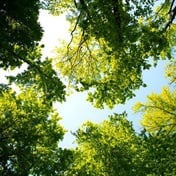Amid the highest recorded pollen counts in history, Health24 will be bringing you exclusive pollen count updates courtesy of the UCT Lung Institute's Allergy and Immunology Unit.
All you need to know about the ragweed invasion.
Here are the major city updates for 7 February:
Cape Town (Western Cape)
Grasses were very low. Trees were low and only Casuarina and eucalyptus were detected. Weeds were low and included: goosefoot, erica and ferns. Mould levels were very low.
Count: 3 (low) [Last week: 4 (low)]
Johannesburg (Gauteng)
Grasses increased to moderate levels. Trees were low and included: birch, eucalyptus, elm, cypress and oak. Weeds were also low and the daisy family and ferns were seen. Moulds were very low.
Count: 22 (high) [Last week: 29 (high)]
Kimberley (Northern Cape)
Grass levels were high at this sampling site. Tree pollen was low and only ash was detected. Weed levels were also low as goosefoot, Euphorbia and Caryophyllaceae (carnation family) were seen. Moulds were low.
Count: 33 (high) [Last week: 24 (high)]
Durban (KZN)
Grasses were detected at a constant moderate level. Tree levels were low and the types detected were: eucalyptus and birch. Weeds were low and included Ragweed, the daisy family, goosefoot and ferns. Mould levels were moderate.
Count: 10 (moderate) [Last week: 4 (low)]
Port Elizabeth
Grasses were low during this sampling week as were trees. Tree pollen types detected were yellowwood, African palm and eucalyptus. Weeds were also low and included Euphorbia and the daisy family. Mould were low.
Count: 2 (very low) [Last week: 3 (low)]
Bloemfontein
Grasses continue to flower strongly. Grass concentrations are high. Tree pollen increased significantly as high counts were recorded for Olea. Searsia/ Rhus, Celtis (white stinkwood), Buddleja, cypress and pine were seen in low quantities. Low weeds (daisy family and English plantain) were detected. Mould were very low.
Count: 79 (very high) [Last week: 34 (very high)]
See the full report HERE.
Reference ranges:
Overall, Trees, Grasses and Weeds all use the same values (grains per cubic metres of air).
Overall count is the daily average of pollen grains per cubic metres of air (trees plus grasses plus weeds)
In partnership with the UCT Lung Institute's Allergy and Immunology Unit.
As the pollen problem worsens, precise and expanded monitoring becomes even more essential. And here's how you can help.
Image: Madison Nickel, Unsplash




 Publications
Publications
 Partners
Partners















